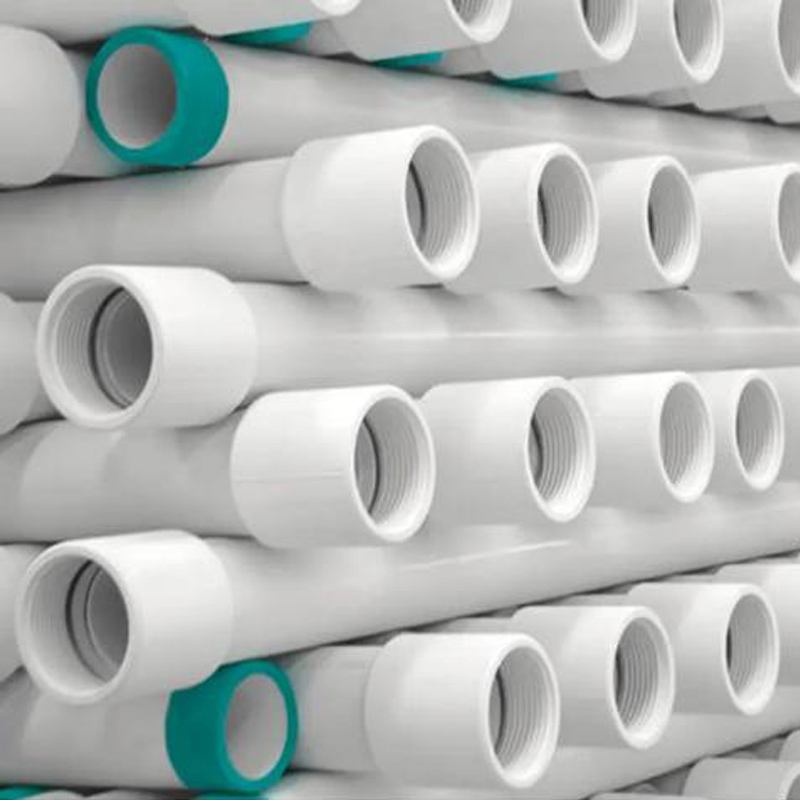Oct . 31, 2024 05:31 Back to list
pvc pipe used for water supply product
The Use of PVC Pipes in Water Supply Systems
Polyvinyl chloride, commonly known as PVC, has become a significant material in various applications, particularly in water supply systems. Its unique attributes make it a preferred choice for both domestic and commercial water supply needs. This article delves into the properties, benefits, and considerations of using PVC pipes for water distribution.
One of the primary reasons for the widespread use of PVC pipes in water supply is their excellent resistance to corrosion. Traditional materials like metal are prone to rust and corrosion when exposed to water and various environmental conditions. PVC, on the other hand, doesn’t corrode, ensuring that the integrity of the water supply remains intact over time. This durability helps reduce maintenance costs and prolongs the lifespan of the plumbing system.
In addition to corrosion resistance, PVC pipes also boast a high degree of chemical resistance. They can safely transport various types of water, including potable (drinking) water, without the risk of chemical leaching or contamination. This property is particularly crucial for ensuring the safety and quality of drinking water, making PVC pipes suitable for municipal water supply systems.
Another notable advantage of PVC pipes is their lightweight nature. Compared to traditional materials such as steel or concrete, PVC is significantly lighter, which makes transportation and installation easier and more cost-effective. Contractors often appreciate this aspect because it reduces labor costs and simplifies handling during construction projects. Furthermore, the ease of installation can lead to quicker project completion times.
pvc pipe used for water supply product

The jointing methods for PVC pipes are also user-friendly. They can be connected using solvent cement, which creates a strong, watertight seal. Some systems use rubber gaskets or compression fittings, allowing for easier disassembly and maintenance if needed. This versatility in joining methods enables greater flexibility in design and installation.
Moreover, PVC pipes have a smooth internal surface, which reduces friction and enhances water flow. This characteristic minimizes the chances of blockage, ensuring a continuous and unobstructed flow of water. The efficiency of water transfer makes PVC a practical choice in both low-pressure and high-pressure water distribution systems.
Despite these benefits, there are some considerations to bear in mind. While PVC pipes are durable, they can be sensitive to extreme temperatures. Excessive heat may cause deformation, while extreme cold can lead to brittleness. Therefore, it is vital to consider the climate where the pipes will be installed and choose suitable grades of PVC designed to withstand specific environmental conditions.
Another factor is the environmental impact of PVC production and disposal. While PVC pipes are recyclable, the process is not as straightforward as with other materials like polyethylene. Efforts are being made to improve the sustainability of PVC, and awareness of environmental issues is driving innovation in the industry.
In conclusion, PVC pipes stand out as an efficient and economical solution for water supply systems. Their corrosion resistance, chemical stability, lightweight properties, and ease of installation contribute to their popularity. By understanding both the advantages and limitations of PVC, homeowners, contractors, and municipalities can make informed decisions about their plumbing needs. As technology advances, it is likely that PVC will continue to play a crucial role in modern water distribution networks, ensuring safe and reliable water supply for generations to come.
-
High-Quality PVC Borehole Pipes Durable & Versatile Pipe Solutions
NewsJul.08,2025
-
High-Quality PVC Perforated Pipes for Efficient Drainage Leading Manufacturers & Factories
NewsJul.08,2025
-
High-Quality PVC Borehole Pipes Durable Pipe Solutions by Leading Manufacturer
NewsJul.08,2025
-
High-Quality PVC Borehole Pipes Reliable PVC Pipe Manufacturer Solutions
NewsJul.07,2025
-
High-Quality UPVC Drain Pipes Durable HDPE & Drain Pipe Solutions
NewsJul.07,2025
-
High-Quality Conduit Pipes & HDPE Conduit Fittings Manufacturer Reliable Factory Supply
NewsJul.06,2025

